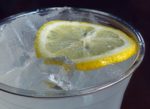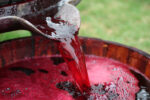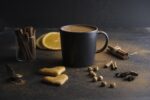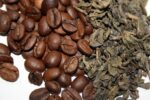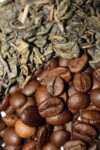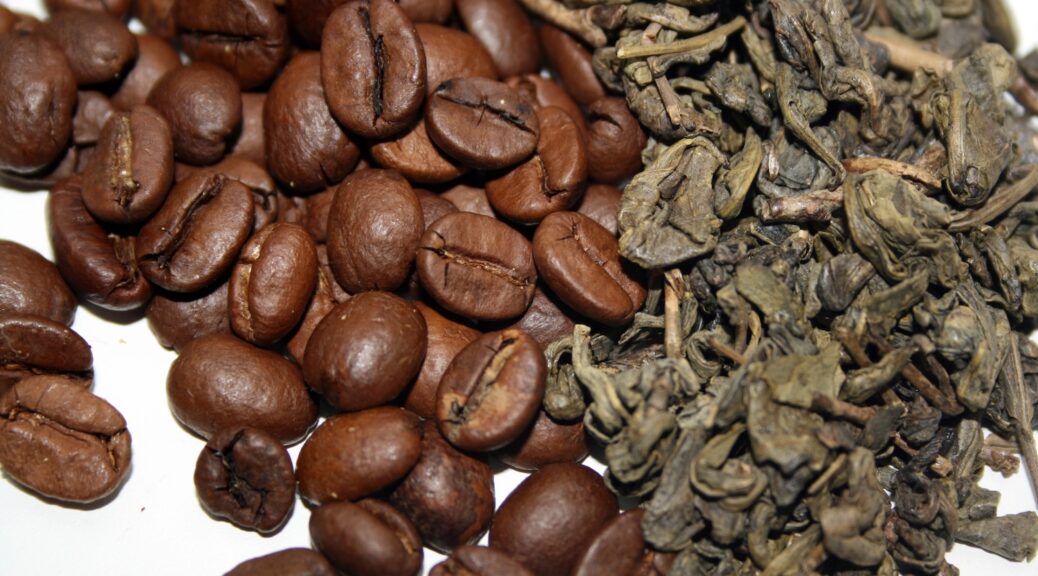
The Best Tea and Coffee at the Grocer’s
It wasn’t until the late 1800s that there were true grocery stores with more than just the basic staples. Then there were many more teas and coffees to choose from. But the buyer had to learn how to tell quality goods from inferior, as well as identify if a product had been adulterated. There were no government food inspectors in those days.
THE INFORMATION BELOW CAME FROM A BOOK CALLED:
GROCER’S GOODS: A Family Guide to the Purchase of Flour, Sugar, Tea, Coffee, Spices, Canned Goods, Cigars, Wines, and All Other Articles Usually Found in American Grocery Stores. By F. B. GODDARD., Copyrighted 1888. New York City.
“In the ancient times of twenty-five or thirty years ago, the grocer’s goods consisted chiefly of codfish, flour, sugar, tea, coffee, salt, molasses and whale oil. There were also a little candy in glass jars, some nuts in bins, a few drums of figs and a box of sour oranges.
But things have changed. The importer now flashes his order under the sea and on, over plains and through jungles to China. “Ocean tramp” steamships are waiting to receive his merchandise, and within thirty or forty days it may be sending up its grateful fragrance from tea tables in the Mississippi Valley.”
TEA
This staple necessity of modern life is now consumed by more than five hundred millions of people, and its use appears to grow with the growth of civilization. There is but one species of the tea plant and its varieties are due to differences of soil and climate. China alone produces annually nearly a million and a half tons of tea; to say nothing of the teas of Japan, Corea, Assam, and Java.
EFFECTS OF TEA
Tea exhilarates without intoxicating and rouses the mind to increased activity without reaction. While at the same time it soothes the body, dispels headache, and counteracts the effects of fermented liquors and narcotics. It lessens also the waste of the tissues under the labors of life.
As an English authority says: “When the time has arrived to the old and infirm, that the stomach can no longer digest enough of the ordinary elements of food to keep up the waste of the system, and the size and weight of the body begins to diminish, tea comes in as a medicine to arrest this loss of tissue.” If supplies of food are scanty it lessens the need for them, while it makes them feel more light and cheerful, and contributes to their enjoyment.
BLACK AND GREEN TEAS
Either may be prepared at will from the same leaves; the difference lies in the mode of treatment. The earliest leaves are the tenderest and best flavored; later gatherings grow more woody and bitter. Black teas are spread in the air for some time after gathering, then roasted and rolled by hand, again exposed to the air, whereby they undergo a slight degree of fermentation, and finally are dried slowly over charcoal fires. The leaves for green tea are, as soon as gathered, roasted a few minutes in pans over a brisk fire, after which they are carefully rolled and thoroughly dried.
The aroma and commercial value of tea are due to a small quantity, (from 1/4 to 1 per cent.) of a volatile oil which it contains. This oil, as in coffee, is developed by roasting, the fresh picked leaves having neither an astringent, aromatic, nor bitter taste. But the effects of tea are due to its theine and tannin. Theine is present in all kinds of tea, as well as in coffee and cocoa, but it has no flavor. Tannin forms from a fifth to a seventh of the weight of the dried tea leaf, and is the more completely extracted the longer the tea is infused, or “draws.” Its precise effect upon the system is not fully known. Black tea contains less theine, essential oil, and tannin, than green tea.
Tea buyers judge quality by the aroma, flavor, and the color and strength of the infusion. They detect vegetable adulterations by the shape and size of the leaf when unrolled, and sometimes burn the leaves and weigh the residue of ash.
VARIETIES OF TEA
Hyson is a widely used green tea. The name is derived from He-chun, a noted Chinese tea grower. Young Hyson is said to be made from the earlier leaves; Imperials and Hysons from later gatherings. Hyson skin is the light inferior leaves winnowed out. Twankay is the poorest of the green, as Bohea is of the black teas.
Pekoe is the best of black teas, but is little used, except to give fragrance to mixtures. “Capers” is used similarly to flavor green teas. Congou (made with care) and Souchong are good black teas, and are the so-called “English Breakfast Teas.” Moyune teas are considered as among the best and healthiest of green teas, while Pingsuys are inferior. Cheap teas are most adulterated. Fine teas are not only better in flavor, but are stronger and go further.
Oolong teas have “the call” in popularity with the Americans just now and they are recommended in sickness by the best physicians. There are three kinds, the Formosa, Foo Chow, and Amoy. The first two are the best. An article in the London Daily News, of February 18, 1888, avers that the Chinese are growing neglectful in cultivating, firing, and fermenting their teas, and that Japan is stealing away the green tea trade of China, as India and Ceylon are taking that in black tea.
JAPAN TEAS
A. & A. Low, of New York, imported the first cargo of Japan tea about twenty years ago, and since then its consumption has constantly increased. The natural leaf is yellowish brown, and the first Japan teas brought here were of that color. But the tint has changed. The “uncolored” Japan tea is in fact now all colored with some substance like the Chinese green teas, but not injuriously. The “Basket fired” is the nearest to the uncolored leaf. The “Sun-dried” is very popular here, and is but slightly colored. Expert tea tasters declare that Japan teas are more exciting to the nerves than those from China.
BLENDED TEAS
New crop teas are the best. Japan teas come in June, and Chinese later, say in July and August. Many prefer a mixture of green and black tea for family use, and retail dealers often have the knack of so blending the two that the excellence of each is enhanced. Such a combination has less effect upon the nerves, and is less expensive than good green tea, while it may be more delightful in flavor than either black or green tea alone.
COFFEE
Coffee has been aptly called the “Beverage of Intelligence.” It quickens the functions of the brain, arouses all the intellectual faculties, stimulates and gives clearness to thought and increases the powers of judgment. It exhilarates the nervous system, counteracts the stupor caused by fatigue, by disease, or by opium, allays hunger, retards the waste of the tissues, fortifies the powers of endurance, and to a certain extent gives to the weary and exhausted increased strength and vigor, and a feeling of comfort and repose.
Both tea and coffee are more and more used in proportion to the intellectual development of modern times. But coffee does not excite the nervous system as greatly as tea and there is less reaction after it.
COFFEE BETTER THAN ALCOHOL
Coffee tends to lessen the desire for alcoholic drinks, and possesses some of their properties without their bad effects. Alcohol is a false and dangerous friend. Its free use enfeebles the vital organs, reduces the power of resistance, degrades the mind and body and leads on to poverty, disease, and death. Coffee produces the beneficial effects of moderate doses of alcohol, without its injurious effects. It does not, like alcohol, destroy the nerves, or invite immoderation, and even when used to excess is incapable of doing serious injury.
The most temperate countries are those which consume most coffee, and in the light of all these facts it would appear that efforts to extend and increase the use of coffee tend to check or diminish alcoholism.
Raw Coffee, unlike tea, improves in quality with age, while it shrinks in weight, and inferior coffees may in time equal the choicest varieties. The aroma is in the direct ratio of its drying by keeping. Inferior coffees are uneven, often unclean. The large, uniform, dense, heavy grains are preferred, as showing complete maturity and careful selection. The color varies from all shades of yellow to tints of brown, green, and bluish green.
COFFEE SUBSTITUTES AND ADULTERATIONS
Rye, beans, peas, acorns, carrots, turnips, dandelion root, burned bread, and many similar substances have at times been used as substitutes or adulterants for coffee. But as none of them contain caffeine or the volatile aromatic oil, they cannot serve the same physiological principle. Ground coffee is extensively adulterated.
CHICORY OR WILD ENDIVE
Roasting develops in this root an empyreumatic, volatile oil which exercises upon the system some of the nerve-soothing, hunger-staying effects of tea and coffee. A little chicory gives as dark a color and as bitter a taste as a great deal of coffee. It is not unwholesome unless taken in excess, when its effects are bad. It is a poor substitute for coffee, but some people seem actually to prefer coffee which contains chicory.
TESTS FOR ADULTERATIONS
If ground coffee cakes in the paper, or when pinched by the fingers, or if, when a little is put into water, a part sinks while the rest swims, and the water becomes immediately discolored, the coffee is probably adulterated. The more caking and discoloration, the more chicory and the less value.
There are numerous brands of ground coffee on the market, and some of them are very popular and satisfactory. There are also various kinds of “Extracts” and “Essences” of coffee, and even humble chicory may sometimes be seen without disguise and nicely put up in yellow papers.
=================================================
Do You Drink Tea or Coffee, or Both? Please Leave a Comment Below.
=================================================
